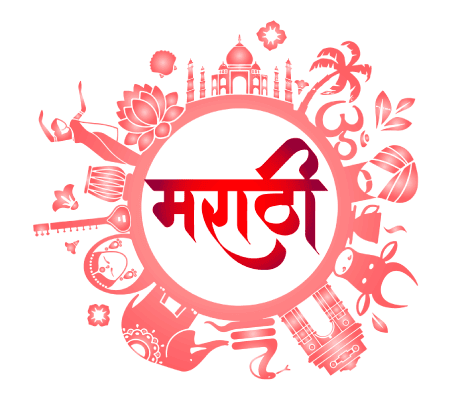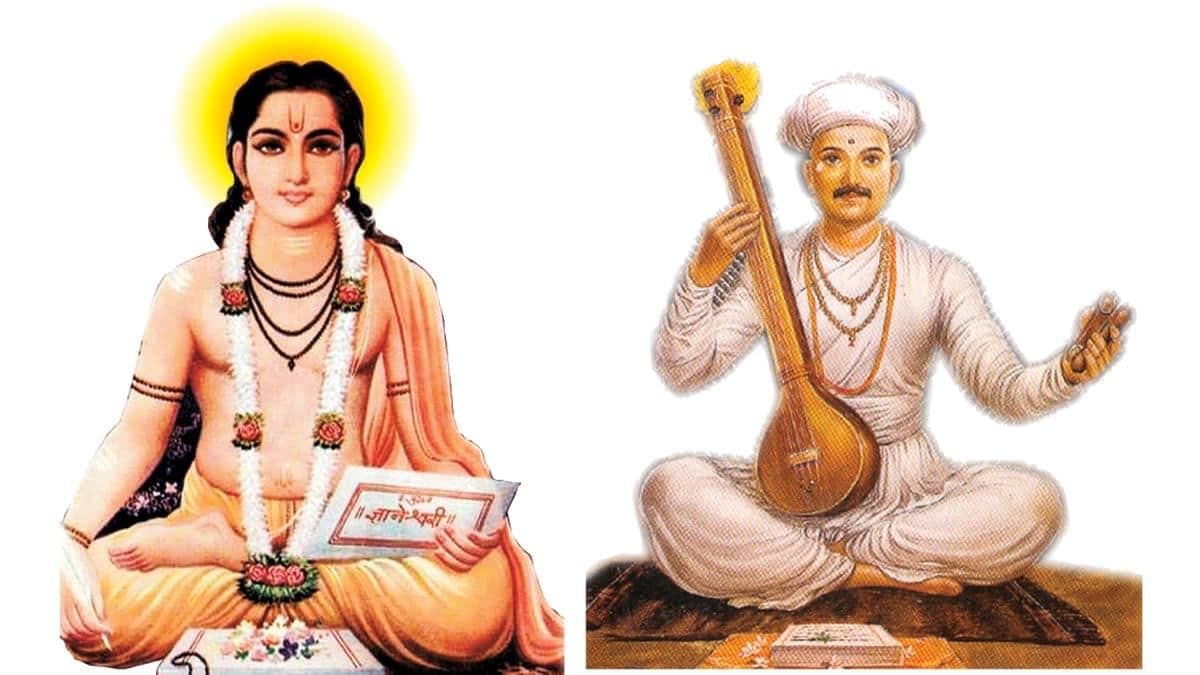Unit Test (Solutions): The Rise of the Marathas | Social Studies (SST) Class 8 PDF Download
Time: 1 Hour
M.M.: 30
Attempt all questions.
Question numbers 1 to 4 carry 1 mark each.
Question numbers 5 and 6 carry 2 marks each.
Question numbers 7 to 10 carry 3 marks each.
Question numbers 11 and 12 carry 5 marks each.
Q1. Which language is primarily spoken by the Marathas?
(a) Hindi
(b) Marathi
(c) Kannada
(d) Telugu
Ans: b) Marathi
The Marathas, primarily from Maharashtra, speak Marathi, a language with a rich history of stories and poems since the 12th century.
Q2. Who was the founder of the Maratha Empire?
(a) Sambhaji
(b) Rajaram
(c) Shivaji
(d) Tarabai
Ans: (c) Shivaji
Shivaji Bhonsle, born in 1630, founded the Maratha Empire, establishing Swarajya through his vision and military strategies.Shivaji
Q3. Is it true or false that Shivaji was known for building a powerful navy to protect the west coast?
Ans: True
Shivaji created a strong Maratha navy to protect the west coast, a significant achievement when the Mughals and Bijapur Sultanate had weak or no navies.
Q4. What was the significant outcome of the battle at Pratapgad fort?
(a) Death of Afzal Khan
(b) Death of Shivaji
(c) Fall of Raigad fort
(d) Defeat of the Mughals
Ans: (a) Death of Afzal Khan
In 1659, Shivaji tricked and killed Bijapur’s general Afzal Khan at Pratapgad fort, defeating his army using guerrilla tactics.
Q5. Name two saints associated with the Marathi Bhakti movement who influenced Maratha identity.
Ans: Dnyaneshwar and Tukaram
Q6. Explain the strategic importance of forts in the Maratha Empire.
Ans: Forts were vital to the Maratha Empire, serving as defensive strongholds and controlling key routes. They enabled the Marathas to endure attacks from powerful enemies like Aurangzeb through guerrilla warfare, as emphasized by Shivaji’s minister Ramachandrapant Amatya in Adnyapatra.
Q7. Describe the administrative reforms introduced by Shivaji to ensure loyalty and effective governance.
Ans: Shivaji’s administrative reforms were designed to create a centralized and loyal governance system, strengthening the Maratha Empire’s efficiency and stability.
- Centralized Control: Removed hereditary posts and paid officials salaries from the state treasury to ensure loyalty to the king.
- Frequent Transfers: Transferred officials regularly to prevent them from gaining excessive power and challenging royal authority.
- Support for Soldiers’ Families: Provided pensions to widows and military jobs to their sons, fostering loyalty and care for his people.
- Ashta Pradhana Mandala: Established a council of eight ministers to manage key aspects of governance, ensuring effective administration.
Q8. Summarize the role of Tarabai in the expansion and military campaigns of the Marathas after Shivaji’s death.
Ans: After Shivaji’s death, Tarabai’s leadership was crucial in sustaining and expanding Maratha power against Mughal domination, showcasing her strategic brilliance.
- Resisted Mughal Control: Led fierce resistance after Rajaram’s death, preventing Aurangzeb from dominating the Deccan.
- Northern Campaigns: Launched invasions into Mughal territories, exploiting Aurangzeb’s focus on the Deccan, and conquered significant regions.
- Military Tactics: Used guerrilla warfare and fort defenses to outmaneuver Mughal forces, maintaining Maratha strength.
- Foundation for Expansion: Her campaigns laid the groundwork for later Maratha expansion under the Peshwas.
Q9. Discuss the causes and significance of the Battle of Panipat (1761) for the Maratha Empire.
Ans: The Battle of Panipat in 1761 was a pivotal event that challenged Maratha dominance but highlighted their resilience despite a major setback.
- Causes: Maratha expansion into northern India provoked conflict with Ahmad Shah Abdali’s Afghan forces, who sought to curb their influence.
- Military Engagement: The Marathas, led by the Peshwas, faced a well-equipped Afghan army, leading to a significant defeat.
- Significance: The loss halted Maratha northern campaigns and weakened their dominance temporarily.
- Recovery: Under Peshwa Madhavrao I, the Marathas recovered, recapturing Delhi in 1771, demonstrating their enduring strength.
Q10. What contributions did the Maratha naval chief Kanhoji Angre make to maritime power?
Ans: Kanhoji Angre significantly bolstered Maratha maritime power in the 18th century, challenging European naval dominance and securing the west coast.
- Naval Victories: Led the Maratha navy to multiple wins using clever tactics and coastal geography, despite less advanced ships.
- Challenged European Control: Demanded trade passes from Europeans, reversing their cartaz system, frustrating powers like the Portuguese.
- West Coast Security: Strengthened Maratha control over the Konkan coast, protecting trade and territorial interests.
- Legacy: Earned the label “pirate” from Europeans, reflecting his success in disrupting their naval dominance.
Q11. Explain how the Marathas promoted cultural revival and language during their rule, citing examples.
Ans: The Marathas sparked a vibrant cultural revival, emphasizing Marathi and Sanskrit while restoring Hindu traditions, influencing art and literature across India.
- Language Promotion: Shivaji’s Rajya-Vyavahara-Kosha replaced Persian with Sanskrit terms in diplomacy, boosting Marathi’s prominence.
- Sanskrit Seal: Shivaji’s seal, inscribed in Sanskrit, symbolized public welfare and cultural pride, diverging from Mughal Persian traditions.
- Temple Restoration: Tarabai and Ahilyabai Holkar rebuilt sacred sites like Kashi Vishwanath and Somnath, reviving Hindu religious practices.
- Thanjavur Contributions: Serfoji II supported Carnatic music, Bharatanatyam, and established India’s first native printing press, blending Marathi, Tamil, and Telugu cultures.
- Literary Patronage: The Bhonsles of Nagpur revived Jagannath worship in Puri, fostering cultural unity and religious traditions.
Q12. Describe the factors leading to the decline of the Maratha Empire and its eventual conquest by the British.
Ans: The Maratha Empire, despite its vast influence, declined due to internal and external challenges, paving the way for British conquest by 1818.
- Internal Disunity: Regional chiefs gained excessive power, deviating from Shivaji’s centralized governance, weakening unified command.
- Battle of Panipat (1761): The defeat against the Afghans halted Maratha expansion and exposed vulnerabilities, though they later recovered.
- British Superiority: The British leveraged advanced organization, technology, and diplomacy, exploiting Maratha divisions in the Anglo-Maratha wars (1775–1818).
- Loss of Cohesion: Actions by some chiefs, like harmful campaigns in Bengal, strayed from Shivaji’s values, eroding public support.
- British Conquest: The Marathas, as the primary rivals, were defeated, enabling the British to dominate India over the Mughals or other powers.
|
87 videos|558 docs|53 tests
|
FAQs on Unit Test (Solutions): The Rise of the Marathas - Social Studies (SST) Class 8
| 1. What were the key factors that led to the rise of the Marathas? |  |
| 2. Who was Chhatrapati Shivaji Maharaj, and what was his significance in Maratha history? |  |
| 3. How did the Marathas manage to establish a vast empire despite facing powerful enemies? |  |
| 4. What role did the Peshwas play in the administration of the Maratha Empire? |  |
| 5. What impact did the rise of the Marathas have on the Indian subcontinent? |  |


















